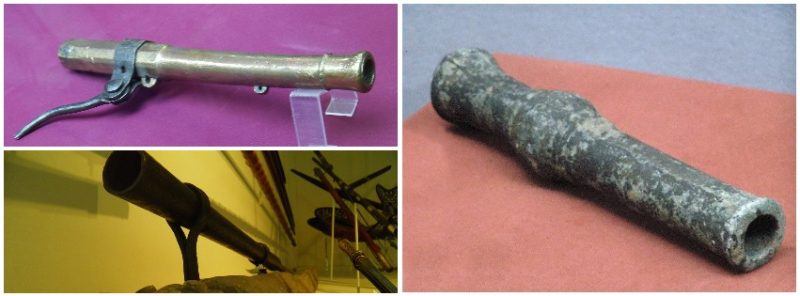The hand cannon was a weapon comprised of a barrel and often a handle. It came in many sizes and shapes. Most surviving specimens are made of iron. Among the many variations, drawings show that bamboo tubes were used in China rather than metal.
Hand cannons are one of the most primitive forms of firearm and are probably the oldest and simplest examples of handheld guns. It is the precursor of the handgun and pistol. Hand cannons were initially used in East Asia and were popular in Europe until the 1520s.
We can see an example of the weapon today. The oldest known hand cannon is the Heilongjiang, made from bronze sometime before 1288. It is believed to be from the Jurchen Jin Dynasty (12th to 13th century), due to the dating of other bronze artifacts found in the same excavation.
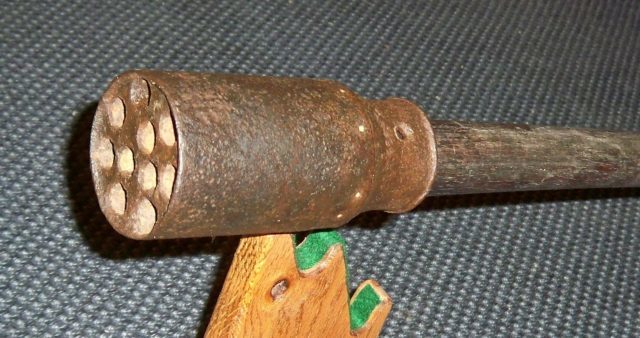
It was excavated in the 1970s by Wei Guozhong in Banlachengzi, a village in the province of Heilongjiang in Manchuria, and is now housed at the Heilongjiang Provincial Museum in Harbin, China. The cannon is 13.4 inches long and weighs almost 8 pounds. The gunpowder chamber is about 2.6 inches in diameter and has a small hole in which a fuse was inserted to ignite the powder. Projectiles used were rocks and arrows.
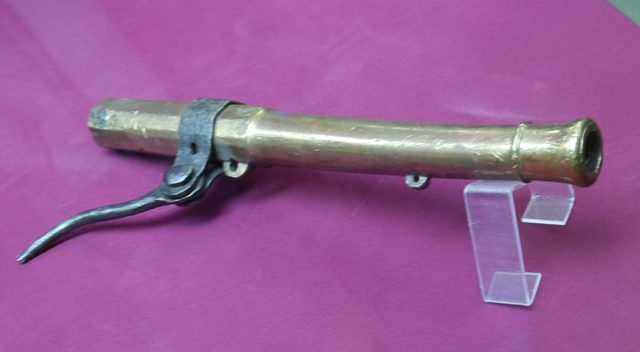
The hand cannon was economical to make and easy to mass-produce at a time when bow and arrow production required a skilled craftsman and took months to complete. It had greater armor-penetration capability than the crossbow and arrow and could act as a deterrent to troops unfamiliar with the loud noise of the weapon. It was easy to use, with no special training required.
The weapon’s disadvantage was smoke often blanketed the battlefield when gunpowder weapons were in use, making it harder for soldiers to see the enemy. With arrows, one could aim better and pick off enemy soldiers more quietly.
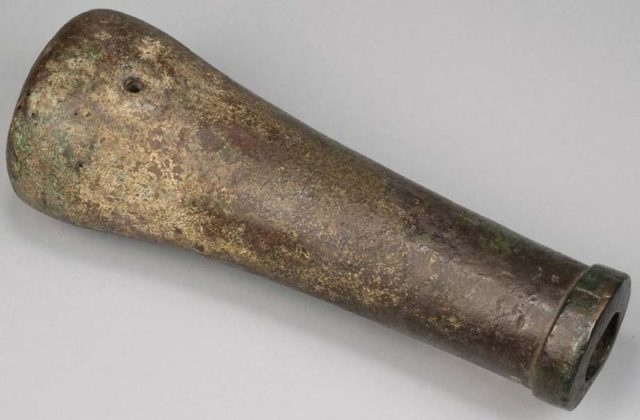
Crossbows had the best accuracy but they were not only expensive to make but also slower to reload. Wind or rain would often push an arrow off course.
The handgun did not immediately lead to the decline of bow and arrow, and the two weapons co-existed for some years; the crossbow’s greater range was beneficial, while hand cannons could be used in closer quarters. By the late 1300s, hand cannons in Europe were being made smaller so that fewer soldiers were needed to operate the weapon. One could hold the cannon while another supplied the gunpowder and projectile. Strength was needed to shoot an arrow effectively, but almost anyone could shoot a hand cannon.

The use of the hand cannon soon became popular in many other countries. France started using them in about 1338; Arabic nations in the mid-1300s; India in 1366; Korea in 1377; Southeast Asia about 1390; and Japan about 1510 after a monk brought one back from China. As more effective and easier-to-use weapons were designed, rulers had to keep up with changing times to stay ahead of their enemies. Moving toward the age of the Renaissance, new technology demanded better trained and more disciplined armies.
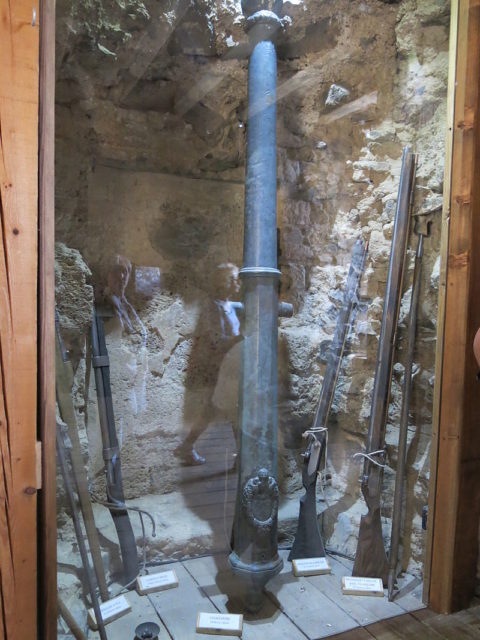

In the 1500s, the matchlock gun was being used in Germany and is believed to be the first firearm using a trigger to ignite the gunpowder.
Read another story from us: The Tsar Cannon: the largest bombard by caliber in the world
It took almost a full minute to reload in the best of conditions, and even longer in the heat of battle. Soon after, the musket became popular and newer technology led to rifles and other more effective gunpowder weapons.
